Xiao Xiao is an associate professor in the School of Community Resources and Development at Arizona State University and located at Hainan University -Arizona State University Joint International Tourism College. Her research interests include climate adaptation planning for parks and recreation areas and transportation management in parks and protected areas. She has been working closely with US NPS and USGS for projects related to climate adaptation planning for cultural resources. She is also serving as associate editor for tourism and park management peer-reviewed journals, including Society & Natural Resources and Journal of Park and Recreation Administration.
肖潇博士现就职于亚利桑那州立大学社区资源与发展学院(副教授),主要负责海南大学亚利桑那州立大学联合国际旅游学院的教学与研究工作。研究方向主要包括:历史文化资源与旅游景观对于气候变化的适应机制与规划,及机器学习算法在旅游规划决策模型中的运用。她目前担任Society & Natural Resources及Journal of Park and Recreation Administration期刊副主编,同时任多个权威期刊审稿人。
Google Scholar link: https://scholar.google.com/citations?hl=en&user=y6ZHmpkAAAAJ&view_op=list_works&sortby=pubdate
Publications
1. Xiao, X., Seekamp, E., van der Burg, M. P., Eaton, M., Fatorić, S., & McCreary, A. (2019). Optimizing historic preservation under climate change: Decision support for cultural resource adaptation planning in national parks. Land use policy, 83, 379-389. https://doi.org/10.1016/j.landusepol.2019.02.011
Abstract: Climate change poses great challenges for cultural resource management, particularly in coastal areas. Cultural resources, such as historic buildings, in coastal areas are vulnerable to climate impacts including inundation, deterioration, and destruction from sea-level rise and storm-related flooding and erosion. However, research that assesses the trade-offs between actions for protecting vulnerable and valuable cultural resources under budgetary constraints is limited. This study focused on developing a decision support model for managing historic buildings at Cape Lookout National Seashore. We designed the Optimal Preservation Decision Support (OptiPres) model to: (a) identify optimal, annual adaptation actions for historic buildings across a 30-year planning horizon, (b) quantify trade-offs between different actions and the timing of adaptation actions under constrained budgets, and (c) estimate the effectiveness of budget allocations on the resource value of historic buildings. Our analysis of the model suggests that: (1) funding allocation thresholds may exist for national parks to maintain the historical significance and use potential of historic buildings under climate change, (2) the quantitative assessment of trade-offs among alternative adaptation actions provides generalizable guidance for decision makers about the dynamics of their managed system, and (3) the OptiPres model can identify cost-efficient approaches to allocate funding to maintain the historical value of buildings vulnerable to the effects of climate change. Therefore, the OptiPres model, while not designed as a prescriptive decision tool, allows managers to understand the consequences of proposed adaptation actions. The OptiPres model can guide park managers to make cost-effective climate adaptation decisions for historic buildings more transparently and robustly.
本研究旨在优化气候变化条件下历史文化遗产保护工作,并为国家公园遗产保护提供决策支持。研究聚焦于海岸地区的文化资源,分析了它们在海平面上升和风暴等气候影响下的脆弱性。首次应用"OptiPres"模型(Optimal Preservation Decision Support)于历史文化资源保护,通过机器学习,制定最佳保护措施。并比较不同措施和预算限制下的决策方案的利弊,并估算不同经费情景下,各种保护措施对国家公园文化遗产资源价值的影响。
本文为气候变化背景下历史文化遗产的保护工作提供了清晰的决策支持。"OptiPres"模型的应用能够帮助管理者在预算有限的情况下做佳的适应决策。此外,本文强调了决策分析在文化资源适应规划中的重要性,为国家公园决策者提供有效的决策工具。该研究还表明,在应对气候变化带来的挑战时,需要综合考虑预算限制、资源价值和气候不确定性因素,并运用决策分析方法来指导规划和决策制定。这将有助于保护和维护珍贵的历史遗产,以适应不断变化的环境条件
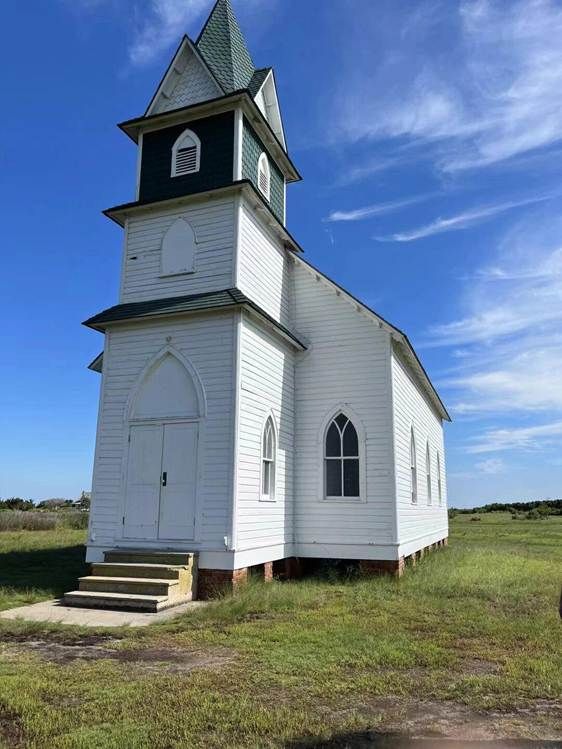
2. Xiao, X., Seekamp, E., Lu, J., Eaton, M., & van der Burg, M. P. (2021). Optimizing preservation for multiple types of historic structures under climate change. Landscape and Urban Planning, 214,104165. https://doi.org/10.1016/j.landurbplan.2021.104165
Abstract: Cultural resources in coastal parks and recreation areas are vulnerable to climate change. The US National Park Service (NPS) is facing the challenge of insufficient budget allocations for both maintenance and climate adaptation of historic structures. Research on adaptation planning for cultural resources has predominately focused on vulnerability assessments of heritage sites; however, few studies integrate multiple factors (e.g., vulnerability, cultural significance, use potential, and costs) that managers should consider when making tradeoff decisions about which cultural resources to prioritize for adaptation. Moreover, heritage sites typically include multiple types of cultural resources, and researchers have yet to examine such complex tradeoffs. This study applies the Optimal Preservation (OptiPres) Model as a decision support framework to evaluate the tradeoffs of adaptation actions among multiple types of historic structures—wooden buildings, masonry and concrete buildings, forts, and batteries—under varying budget scenarios. Results suggest that the resource values of different types of historic structures vary greatly under a range of budget scenarios, and tradeoffs have to be made among different types of historical structures to achieve optimal planning objectives. Moreover, periodic, incremental funding and partial maintenance are identified as optimal funding strategies for preservation needs of cost-intensive historic structures. Also, adaptative use of historical buildings (e.g., building occupancy) can improve the resource values when budget are constrained. The OptiPres Model provides managers with a unique framework to inform adaptation planning efforts for a broad range of historic structures, which is transferable across coastal parks to enhance historic preservation planning under climate change.
本文在前文研究结果的基础上,针对气候变化条件下多种类型历史建筑的保护问题进行了探讨。研究运用了“最佳保护(OptiPres)模型”作为决策支持框架,评估了不同类型历史建筑在不同预算情景下的适应行动权衡。研究结果表明,不同类型历史建筑的资源价值差异很大,需要在不同保护措施之间进行权衡,以实现最佳规划目标。周期性的增量资金和阶段性维护是有效的保护策略。同时,有效利用历史文化建筑比空置建筑能更有效地提高历史遗产的资源价值。
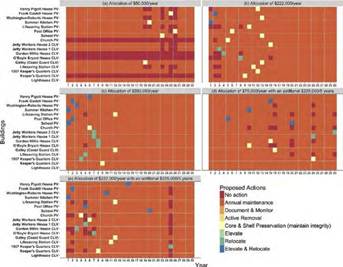

3. Xiao, X., Li, P., & Seekamp, E. (2023). Sustainable Adaptation Planning for Cultural Heritage in Coastal Tourism Destinations Under Climate Change: A Mixed-Paradigm of Preservation and Conservation Optimization. Journal of Travel Research, 0(0). https://doi.org/10.1177/00472875221143479
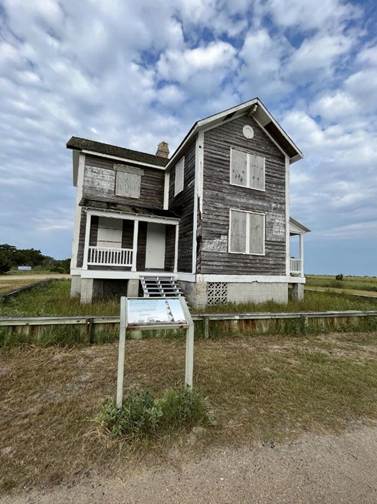
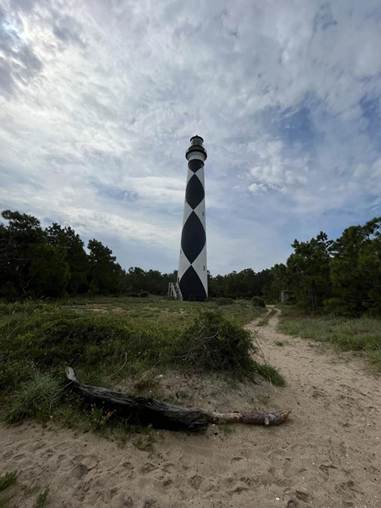
Abstract: Fragmented guidance and unbalanced climate adaptation efforts for tangible and intangible cultural heritage are challenging the long-term sustainability of coastal tourism destinations. Conceptualizing and quantifying adaptation paradigms that optimize cultural heritage preservation from multi-faceted perspectives under fiscal constraints is highly prioritized by coastal tourism destinations. Informed by the Modern Portfolio Theory, this study developed, tested, and evaluated four adaptation paradigms using machine-learning approaches to optimize the historical significance, tangible, and intangible values of multi-type cultural heritage in Gulf Island National Seashore across a 30-year planning horizon under varying fiscal constraints. Results indicated that adaptation paradigms can provide transformative and flexible preservation portfolios to preserve tangible and intangible uses when facing degradation or loss from inadequate funding and intensifying climate threats. The mixed-paradigm framework optimizes preservation efforts between tangible and intangible cultural heritage quantitatively and can be generalized to coastal tourism destinations globally as a sustainable climate adaptation decision support tool.
本研究旨在为沿海旅游目的地的文化遗产开展可持续的适应规划,以解决气候变化对文化景观的威胁。通过运用现代投资组合理论和机器学习方法,本文总结了四种适应规划模式,并在墨西哥湾岛国家海滩公园进行评估与优化。研究结果表明,适应规划模式能够在财政限制下优化保护和利用文化遗产的物质和非物质性价值,为沿海旅游目的地提供可持续的气候适应决策支持。
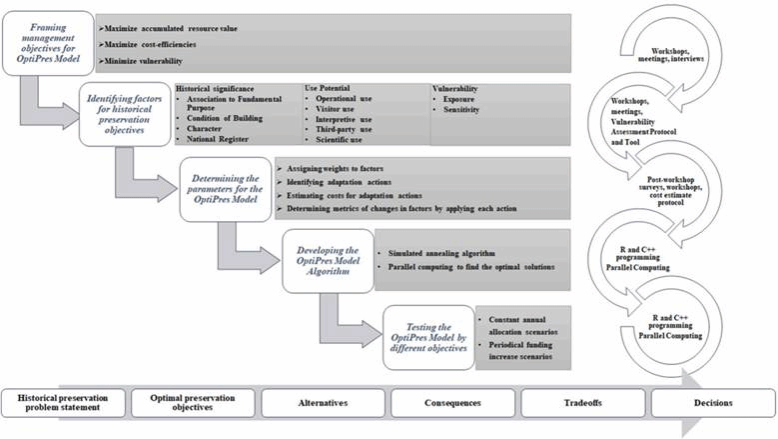
Service
Dr. Xiao Xiao actively participates in editorial and reviewing work for international journals in tourism and recreation management. She currently serves as the Associate Editor of Society & Natural Resources. She has frequently served as a member of Award Committee for the international Travel and Tourism Research Association (TTRA) annual conference.
肖潇博士积极参与旅游地理国际期刊论文的评审工作。《Society & Natural Resources》副主编。同时,她多次担任国际旅游年会(TTRA)优秀论文评审委员会委员。